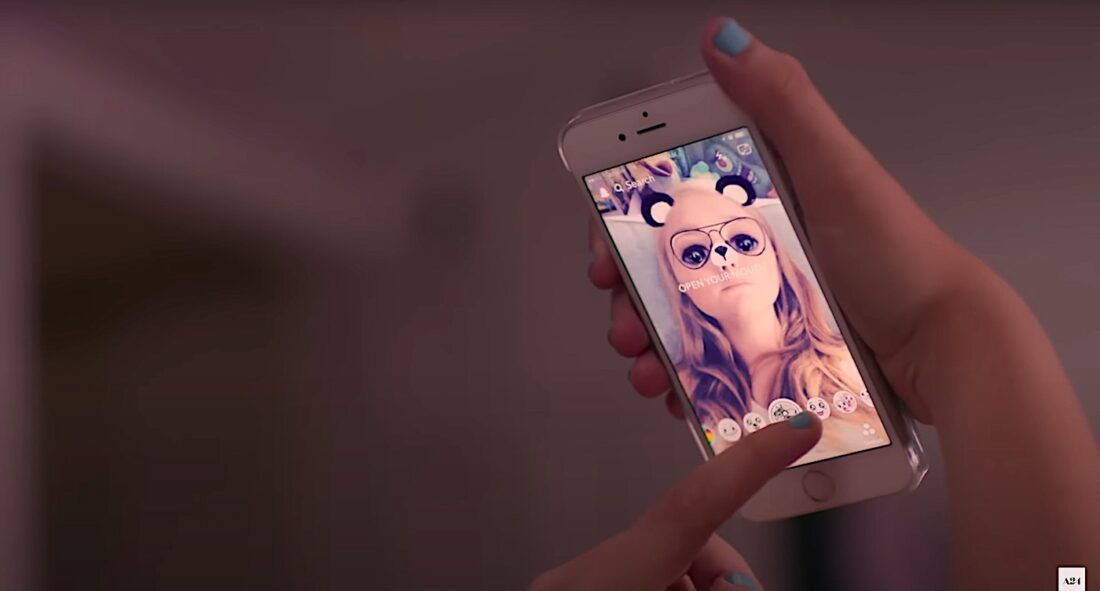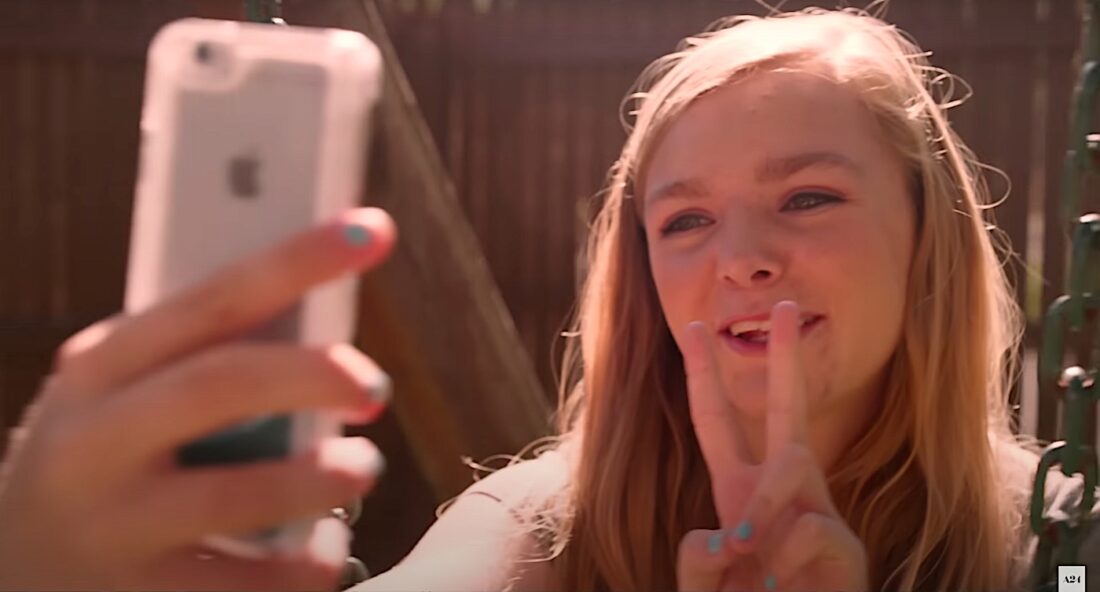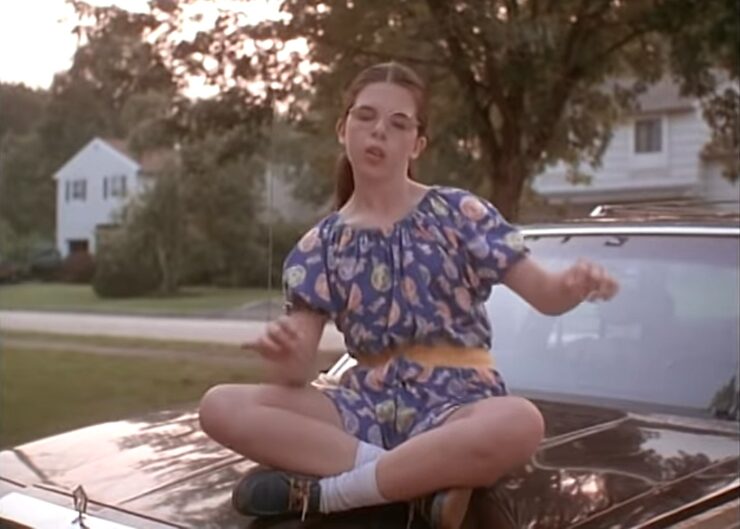Content warning: This essay involves discussions of physical and verbal bullying, including slurs and other language readers may find offensive.
I have many mean girl (and boy) stories and several fit prosaic narratives about body shaming, homophobia, and internalized misogyny. I have just as many that don’t fit any template.
Sra. C was a diminutive Afro-Latina woman, somewhere in her 40s or 50s, with greying Marge Simpson hair, who had an unfortunate habit of talking to seventh graders like they were fifth graders, a habit that can grate on anyone eager for adulthood and power. For a long three months, she had worked in a crammed classroom, in violation of several health and fire codes. She taught us games and rhymes, and for Christmas, Spanish-language versions of holiday classics. My classmate S complained to the principal that the lesson was a violation of her religious faith.
Like S, I was Jewish, but I came from a family that kept an enormous, Vegas-style Christmas tree in the living room, and I took no offense. S didn’t either, as she told me later, with remarkable candor. She just wanted to hurt Sra. C.
Apparently, Sra. C’s meeting with our principal, Dr. G, a lovely man who later retired and embarked on a second career as a preacher, was humiliating. Afterwards, she stood before us, a tired, passionate woman, emotionally naked, her voice cracking as she could barely sound out the words, “I love my students.” None of us were prepared to offer comfort.
I have been able to tell other mean girl (and boy) stories with an edgelord’s humor. I’ve never been able to locate a single joke in what happened in my Spanish class in Eastern Middle School, in Silver Spring, Maryland, a few days before Christmas in 1993, partly because it was just a little too much to see an authority figure so thoroughly destroyed, partly because it serves as a reminder of how easily bad actors can weaponize inclusive laws. I have no idea what happened to S; as far as social media is concerned, she is a non-person. Wherever she is, I hope she has enjoyed each of the last 240 nights of Hannukah.
Two years later, in 1995, I was in high school. Less than half of American households owned a computer at that point, and – I was surprised the number was this high – only 16 percent had internet access. Bullying in the mid-1990s was still analog, but for me at least, rarely physically violent.
It was different in the 1980s movies we were still watching, where cliques were impermeable, teachers sucked, and parents were either wise or grossly incompetent. My bullies were more sophisticated than The Karate Kid’s Johnny Lawrence or Back to the Future’s Biff Tannen. Saved by the Bell’s nerds—maybe we’d call them neurodivergent now—were stuffed in lockers. That happened in real life, just as it happens today, but the focus on violence was often a mark of lazy writing.

If you were a kid who suffered the wanton cruelty of the mean girl or mean boy, and if you had suffered the great weight of untreated, early adolescent depression, there was really only one movie for you: Todd Solondz’s Welcome to the Dollhouse. Kids throw spitballs in this world, and gay bashing is common. The film’s protagonist Dawn Wiener (Heather Matarazzo) is known as Wiener Dog, and the description is not inaccurate. Her baby fat has taken up permanent residence in her cheeks, her lower lip rests in a droop. Solondz colludes with her bullies in his uncompromising close-ups, capturing a head that perpetually tilts up as she yearns for the affection she will forever be denied. Daniel Clowes could have drawn her, but he would have been kinder.
There is physical violence in Welcome to the Dollhouse, but the verbal assaults are the ones my friends and I quote. In the opening scene, a group of wolfish alpha girls approach Dawn in the cafeteria. The leader: “Hi, Dawn, sorry to bother you, but we were just wondering… Are you a lesbian?” Yes, a tomboyish outcast says. She just made a pass at her. (Every Xennial played a role in an analogous scenario. The ones who didn’t are amnesiacs or liars.) Her crush explains that a club she started in elementary school for “special people” is a club for “retards.” Solondz has a talent for slurs, able to communicate both the brutality of their sound and the hilarious ways they reveal the moral stupidity of those who use them.
Dawn’s life is joyless. She defends her best friend: “Just because Ralphie’s a faggot doesn’t mean he’s an asshole.” She apologizes to her sort of boyfriend Brandon (Brendan Sexton III), “I don’t mean to be a cunt.” Her mom openly prefers her younger sister who lives in a tutu. Solondz cast a series of malicious, Fellini-esque faces for her family members, teachers, and administrators, who collectively maintain a system without justice. When Dawn protests that she is exercising self-defense, her mother admonishes her, “Who told you to fight back?”

The movie fully occupies the headspace of the 13-year-old, who is treated with contempt, and who is unsure if the contempt is justified. It’s a cliché that every seventh grader hates herself. Welcome to the Dollhouse has a follow-up: there are some seventh graders whose self-disgust is at least partially well-founded. Dawn is unfunny, and without interests, trapped in a hateful family. She wishes to be a hero, and punches far above her weight in search of popularity, but no one is interested in giving her a triumph. Dawn is caught in a vicious cycle. Cruelty is inflicted upon her, and she is forced to try everything—everything decent, devious, brave, or cowardly—to survive, and in the end she blows the three halfway decent relationships in her life. In the final scene, Solondz’s camera settles on Dawn’s face on a school bus, as she sits alone, singing along to a pep song, on a trip to Disney World. As a filmmaker, Solondz always finds empathy for the repugnant, the person you really don’t want to befriend.
I’ve met a number of people who admire Welcome to the Dollhouse and hate Solondz’s other movies. His weltschmerz meets most people’s memories of middle school, but that worldview doesn’t apply to everyone’s adulthood. At the end of Welcome to the Dollhouse, Dawn Wiener is hit with the realization that things won’t get much better. In high school, her brother tells her, “They’ll call you names, but not as much to your face.” She was born Wiener Dog, will remain Wiener Dog, and die Wiener Dog.
Solondz would return to the character twice. In Palindromes, released a decade later, he overloads her tragedy, places too much on her and our shoulders. In the opening scene, we learn that Dawn gained weight and then committed suicide after getting pregnant following a rape. In an interview Solondz said he wanted Dawn to go on, but Matarazzo refused to reprise her role. Another decade later, he brought Dawn back to life in Wiener-Dog, and reunited her with Brandon, recasting the roles with Greta Gerwig and Kieran Culkin. Here, Solondz gives her a future she might have predicted for herself, one in which she still struggles to make a human connection.
There have been several revisionist high school comedies since Welcome to the Dollhouse, and they offer more nuanced takes on the social landscape of adolescence. Daria and Freaks and Geeks respect the outsiders while acknowledging their flaws, and they are generous to the cool kids, even the jerks. The parents are neither good nor bad, but usually good-enough. Each show has a message: adolescence is about losing, but it will end eventually, and the people in your world are better than you realize.
It’s telling that until Bo Burnham’s Eighth Grade, released in 2018, two years before the pandemic, so few films examined middle school, and even then, nothing with the honesty of Solondz. Burnham’s protagonist, Kayla Day (Elsie Fisher), is a sweet girl, with a body that only a twisted culture would consider unhealthy. She is a perpetual victim, who rarely does wrong, a character that strains credulity. Burnham is a kind soul, and as an adult man, he is probably worried about punching down on a girl whose tormentors include not just mean girls but potential rapists.
Six years on, even amid our mental health crisis, and the panic over smartphones, pornography, and isolation, Kayla Day’s name has not entered the hipster lexicon. The real question, now, in the early 2020s, is about Dawn Wiener—not where she is today, but what middle school would have been for her had she been born 30 years later.
Eighth Grade was, for 2018, an up-to-the-second reportage of life for a middle-class middle schooler in early twenty-first-century America. It marked the first time I heard the news of Gen Z’s migration from Facebook to Instagram or that active shooter drills had replaced fire alarms. For the Dawn Wiener of 1995, it is a science-fiction dystopia.

In Welcome to the Dollhouse, Dawn spends long after-school hours laid out on the living room couch, mindlessly staring at a late afternoon diet of self-help gurus and quiz bowl challenges. In Eighth Grade, Kayla spends long hours on her bed, staring at an even smaller screen, all but praying for likes. Dawn can escape from the middle school landscape into the dull world of mid-1990s daytime television. Kayla does not have that option.
Likewise, there is a possibility, in Dawn’s world, in Solondz’ universe, that sex can be intimate and kind. Brandon tells her to meet him at a specific time so he can rape her—it turns out he just wants to make out, and Dawn’s more into it than not; the relationship is one of the movie’s messed-up moments of reprieve. The boys in Eighth Grade, first the popular boy, Kayla’s crush, and then a high school kid who assaults her, have been poisoned by pornography. The dreamboat is a dumbass creep who asks Kayla to send him nudes. The second tries to trap her in the back of the car.
And finally, there is a serious question as to whether the bullying Kayla suffers is any less cruel than Dawn’s. For the most part the mean girls in Kayla’s class treat her with active indifference. She is beneath not only a like on an Instagram photo, but even a cruel nickname. She does not exist. Dawn, on the other hand, has a role to play, even if it is Wiener Dog.

In the early 1990s, the physically bullied on television were enviable. There was a clear moral marker in physical aggression, something only truly evil people committed. To be the victim of such was a mark of weakness, sure, but also nobility. On that note, I wonder if the Kayla of 2018, or 2024 now, would envy Dawn Wiener.
For unlike Kayla, Dawn Wiener has an evil system she can fight and she fights to the very end, opts fully and totally in in her search for physical intimacy, love, and admiration. Kayla looks at Dawn and sees a girl she very much does not want to be, but also a character with the opportunities to prove herself on her own terms. When Kayla does stand up to her bullies, they remain so buried in their smartphones they barely notice. Kayla may have proved more impressive in Dawn’s world. She may have realized an unqualified triumph.
Many have seen themselves in Dawn Wiener, which I find interesting. Yes, Dawn Wiener represents how the bullied seventh grader perceives themself, but not necessarily their objective reality.
Sra. C, obviously, was not Dawn Wiener. She was an adult woman with emotional reserves unavailable to Dawn. But M wasn’t Dawn either; he maintained a devout faith and a love of music, both of which served as a refuge from those who made fun of his bad skin or Asian background. P was short and annoying, but like so many others, he had Star Wars. There were many quiet, casually ostracized fat girls and boys who spent their free time reading everything from James Herriott to Sylvia Plath. I wasn’t Dawn either. I grew up in a loving family, was able to make friends, if not great friends, and I walked my own miserable path through adolescence. Other than Sra. C, we did not protest our condition.
Our well-meaning and often poorly considered anti-bullying programs are weapons in an unwinnable war. There are mean girls in Edith Wharton, Aristophanes, and the Bible. If so few writers have paid Dawn Wiener any attention, however, it may be because true Dawn Wieners tend to occupy the outer peripheries of most people’s, including most socially awkward writers’ circles.
But if I mine my memory, I can locate one. I jump ahead to my senior year in high school, and a sallow kid, with large ears and strange teeth, V. T, one of the few out kids in my class, nurtured a natural talent for intimidation as a means of protection and was happy to call people names to their face; V was “Goat Boy.”
I never spoke to V. No one I know did, and I can only imagine the misery of his middle school years. T is married and, as far as I can tell, happy. He turned into a pretty decent fellow, ashamed of his past behavior. V, like S, has disappeared into the ether.
There was no heroism in my world and the villains, in retrospect, had no grandeur. Still, there was the opportunity that we could participate, however fecklessly, in a great political game. The terror of our current moment is that it has robbed both Sra. C of what she gave herself and Dawn of the rare quality Solondz gives her, the ability to fight for love and lose, and to lose with something resembling honor if not dignity.










